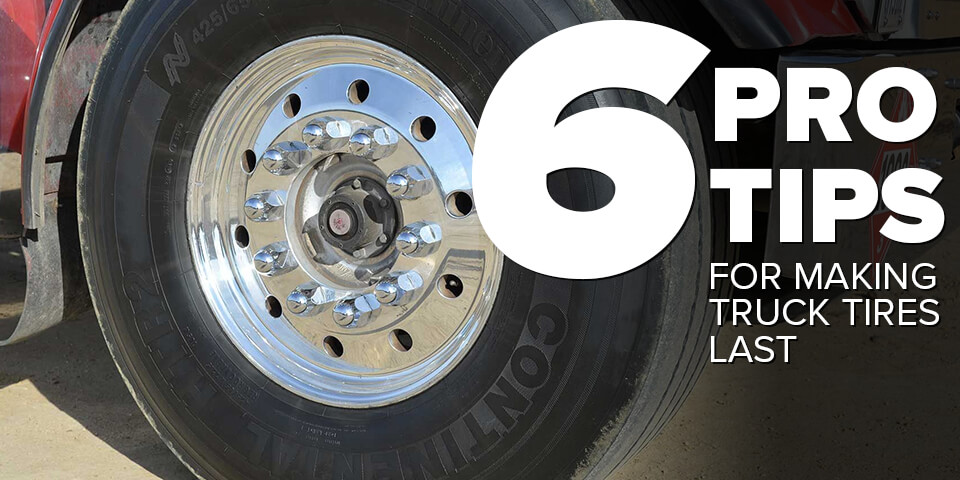Truck Topics

6 Pro Tips for Making Truck Tires Last
As an expedite owner-operator or fleet owner, the quality and condition of your truck tires directly impact driver safety, fuel economy, and your profitability. But how can you maintain your tires so that you can get the most life out of them?
EO reached out to David Pressley, manager of Michelin North America’s Customer Engineering Support for insight. Here’s what he says you need to do to keep your tires on the road longer.
#1. Tire Pressure
This might be the most obvious tip, but Pressley says it is by far the most important to keeping your tires not only in good shape but safe, especially for Class 8 trucks with heavy loads. “If the tire is 20-percent below the recommended pressure, it must be considered flat,” says Pressley. “It should then be removed and inspected for punctures or other damage. Failure to do so may lead to unwanted downtime.”
In fact, even if a tire runs 10-percent underinflated it will lose 10-percent in tread wear and will come out of service quicker. Pressley says this is the biggest problem facing the industry, being the number one cause of premature tire removal — resulting directly in downtime and loss of revenue.
Michelin Pro Tip: Periodically calibrate the gauges using a master gauge. Over time, usage conditions can cause a pressure gauge to lose accuracy beyond the 2-psi manufacturer’s tolerance range. Taking the time and effort to verify gauges and check tire pressure is time well spent.
#2. Alignment
Don’t just scan over this section. While alignment is another obvious tip, Pressley stresses that tire problems are directly traced back to mechanical conditions of the truck. “The dual purpose of proper alignment is to minimize tire wear and to maximize predictable vehicle handling and driver control,” says Pressley. “Toe misalignment is the number one cause of steer tire irregular wear, followed by rear axle skew.”
#3. Tire Matching
Thinking of mixing and matching tires? Pressley says tread lightly, especially across an axle. If you can’t match the tires exactly, he says, “try to match tires with the same tread depths, same tread patterns, and same height or diameter.”
#4. Tire Rotation
While your tires may match, it still might be necessary to rotate them — especially the radial tires. But, if your tires seem to be wearing evenly, there’s no need to rotate. Pressley warns, though, “If irregular wear becomes apparent or if the wear rate on the tires is perceptively different — from axle-to-axle for drive tires and side-to-side for steer tires — then the tires should be rotated in such a manner as to alleviate the condition.”
#5. Brake Maintenance
Keeping up with brake maintenance is imperative to keep your tires from wearing down too fast, especially if you're dealing with the older drum brake systems which are challenged by the demanding start-stop application.
Pressley pointed out that excessive brake heat can lead to direct degradation of the bead area, reducing future retread opportunities and even lead to possible tire failure. To avoid this, he says, the industry is now largely adopting disc brakes "which greatly reduces the heat generation from constant stopping."
So if you don’t have the disc brakes, be sure to pay even more attention to your brake maintenance.
#6. Put a Maintenance Program in Place
Finally, Pressley couldn’t emphasize the importance of maintaining proper records enough. Not only should you choose a tire provider that you trust, but you should also keep track of all the tires you buy. For those who think this may be too much work on top of what they’re already doing, Pressley says it’s well worth the time investment. You can even sign up for tire maintenance programs that keep track of all of this for you.
“For example, our Michelin Tire Care program has been instrumental in maximizing uptime and reducing the cost for participating fleets,” he detailed. “The program can potentially help fleets save thousands of dollars in tire-related emergency road service by properly managing the asset.”
